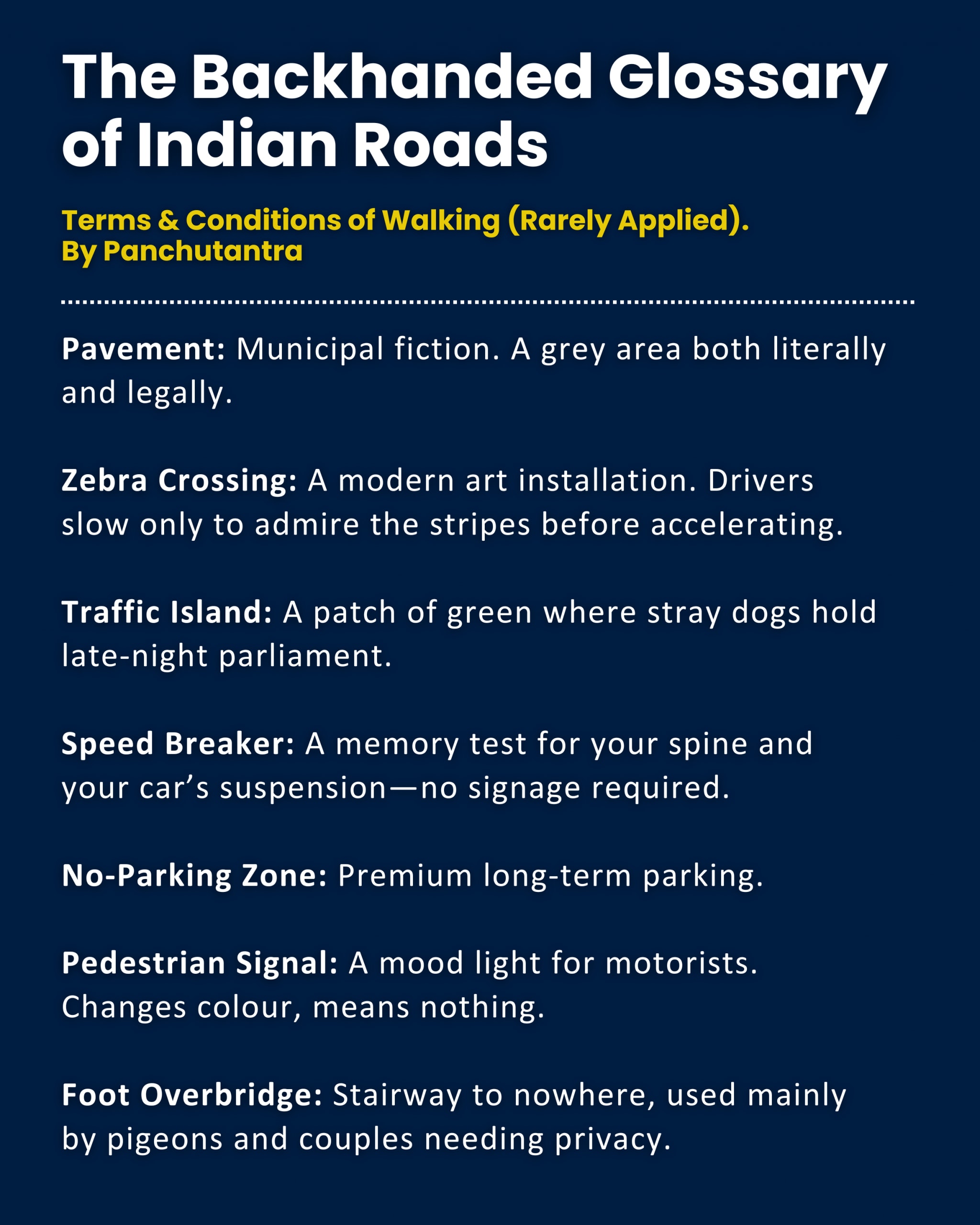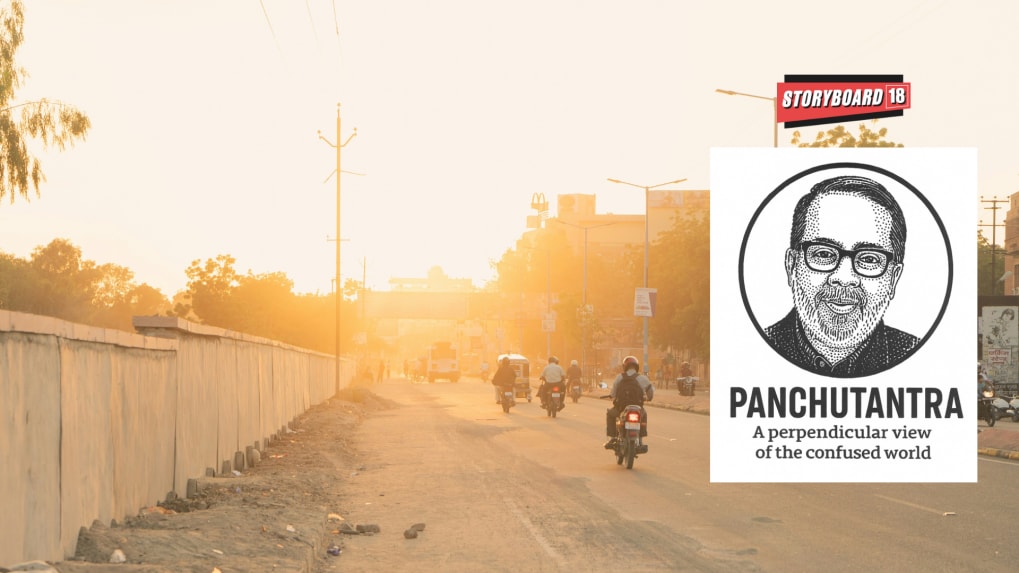The Parable of the Pavement, By Panchutantra
In the great Indian cityscape, pavements exist not as paths for feet, but as misunderstood suggestions — quickly claimed by vendors, vehicles, and the sheer force of urban improvisation.
ADVERTISEMENT
Long ago, when city planners still believed in fairy tales, they drew a neat grey strip beside every road and called it “pavement.”
It was meant for people who walk.
Indians, of course, took one look and decided—like salad at a wedding buffet—cute idea, but who wants it?
The Pavement as Myth
On government blueprints the pavement is two metres wide.
On earth, it’s a cross between a rumour and a crime scene.
Spotting a continuous stretch is like spotting a unicorn that pays taxes.
Mumbai: Mountaineering for beginners
In Mumbai the pavement is a Himalayan trek disguised as urban furniture.
Every twenty metres the height changes without warning—as if the BMC outsourced construction to a drunk origami artist.
In Bandra, entire buildings have installed iron railings right down the middle.
Nothing says “welcome pedestrian” like an impromptu obstacle course designed by a sadistic interior decorator.
Kolkata: The Open-Air Mall with QR Codes
Kolkata solved the pavement problem early: hawkers nationalised it.
It’s now a kilometre-long shopping mall without the air-conditioning but with QR codes for your puchka.
The occasional pedestrian is treated like a cow that has wandered into the food court—politely nudged back into traffic where they belong.
Delhi & Friends: Parking, Parties and Drain Covers
Delhi treats pavements as VIP parking for SUVs and occasional wedding venues.
Bengaluru prefers the “seasonal disappearing act”—during monsoon, the pavement is a shallow river hosting a convention of floating drain covers.
Jaipur, ever romantic, strings up a tent and calls it a footpath reception.
Walking? How Adorable.
In India, asking if the pavement is for walking is like asking if the internet is for reading.
Roads are for pedestrians. Pavements are for two-wheelers escaping traffic, for chai stalls, for the occasional goat.
Your best shot at survival is to walk like you’re auditioning for Fast & Furious: Footpath Drift.

Moral of the fable: In India, pavements were never built for your feet.
They exist so we can practise the oldest civic virtue of all—survival by sarcasm.
So walk boldly in the middle of the road. The pavement left that job years ago.
Read More: ‘Too many requests’: A citizen’s guide to Glitch-Based nation building. By Panchutantra


